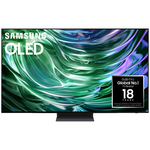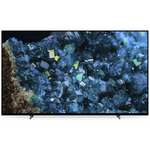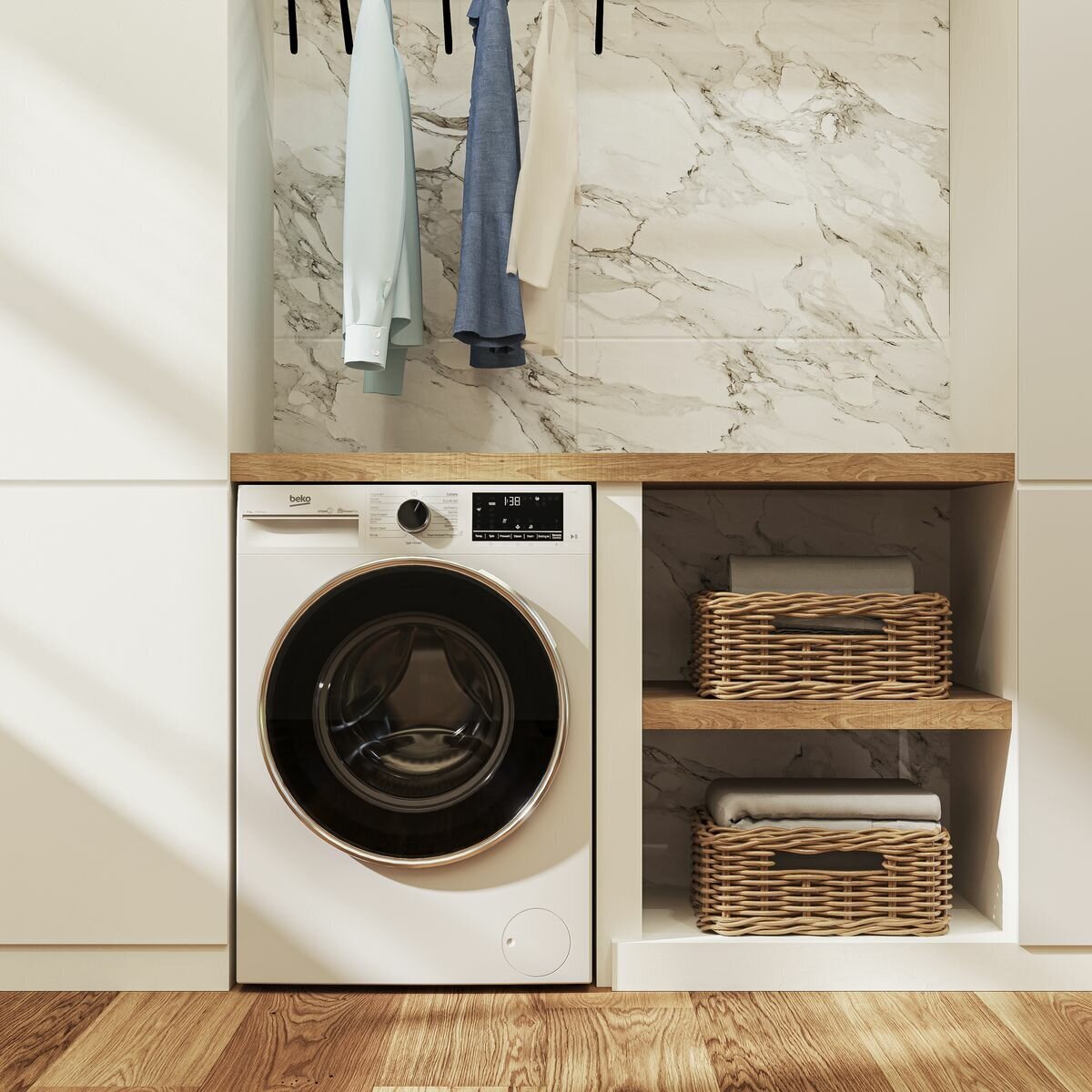
TV, Audio & Electronics
From movies and music to streaming and gaming, let's talk TV, tech and home entertainment!
TV, AUDIO & ELECTRONICS | 4 MARCH, 2025
12 MIN READ
OLED, QLED or QNED? The other technology to look for in your new 4K TV
How OLED, QLED and other TV tech enhance TV images.
If you’re buying a new TV in 2025, you’ll most likely get a 4K UHD model, the standard screen resolution for most new televisions, or possibly an 8K TV. Packed with millions of pixels, these Ultra High Definition screens deliver incredible detail and image resolution that we could only have dreamt about a couple of decades ago.
While the number of pixels is paramount, other display technologies also contribute to superior image quality. So, in addition to spruiking their 4K or 8K credentials, TVs will usually include other acronyms in their product name or features. From OLED to QNED, this article looks at what these selections of letters mean, and what the TV technology does.
The LED and LCD combination
Back in the 2000s, the early years of HD and Full HD TVs, the screens were illuminated by Cold Cathode Fluorescent Lamp (CCFL) backlighting. This old-style technology had several limitations, including low energy efficiency, a thicker TV design, and poor contrast. A couple of technological developments changed this.
LED backlighting
The arrival of LED (Light Emitting Diode) technology to illuminate pixels and produce images was a game changer, and by the early 2010s, most new TVs were being backlit by LEDs. While Sony’s unveiling of its first UHD 4K TV in 2012 heralded the end of the original HD and Full HD era, the new generation of screens continued to use LED backlighting - and most still do.
There are two main types of LED backlighting: Edge Lit and Full Array. The more common option, Edge Lit models have LEDs positioned along the edges, which results in a thinner profile, but limits the TVs ability to display deep blacks and precise local dimming. The more expensive option, Full Array LED TVs have LEDs arranged across the entire back of the screen, allowing for superior contrast and black levels, which enhances overall picture quality.
LCD screen
As for the screen itself, by the advent of HD TV, the traditional, curved Cathode Ray Tube screens of yesteryear had been replaced by LCD (Liquid Crystal Display) screens.
When combined with LED backlighting, LCD technology is a crucial part of the overall display process. By coupling a flatter front with a much shallower back, the combination of LCD and LED also allowed manufacturers to create the first true flatscreen TV designs that are now standard. For several years ‘flatscreen TV’ was a prominent selling point, whereas now there’s no other kind. It’s funny to think that TVs used to be almost as deep as they were wide!
Today, your new UHD TV, whether it’s 4K or 8K resolution, will usually have an LCD screen with LED backlighting - with a couple of exceptions (more on that in a moment). Many will also incorporate other display technologies that further enhance the picture quality. Let’s take a look at those.
The other display technologies enhancing your TV
The terms you’re most likely to see incorporated into the names and specs of new TVs are QLED, Neo QLED, QNED, and ULED. All of these refer to specific evolutions or variations of LCD technology involving advancements in the display panel itself.
You’ll also see the terms OLED and QD-OLED on some TVs, and these refer to a completely different type of display technology. Here’s what they all mean.
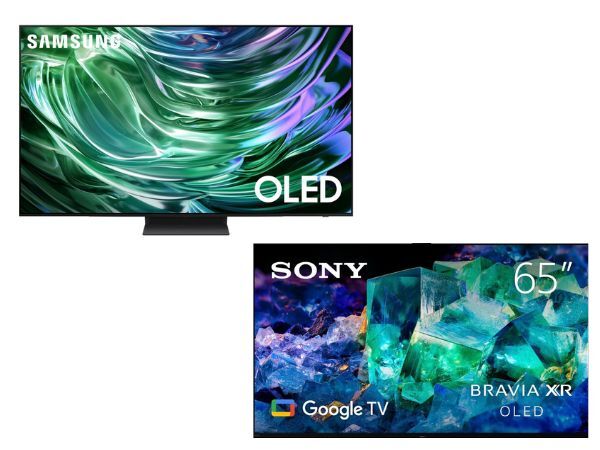
OLED and QD-OLED
OLED is completely distinct from the other display technologies because it doesn’t use an LCD screen or LED backlight. There are two main choices of OLED.
What is OLED TV technology?
Introduced in the mid-2000s, OLED (Organic Light Emitting Diode) technology can achieve true black levels, exceptional contrast and high colour accuracy.
OLED technology uses organic compounds that emit light when an electric current is applied. The key point of difference from LCD panels is that each pixel in an OLED screen emits its own light. This enables individual pixels to be turned off when needed, resulting in true black levels, high contrast ratios and vibrant colours.
This self-lighting means that OLED panels don’t require an LED backlight, and can therefore be made extremely thin and even flexible. OLED TVs also enable better viewing for large groups, because the colour and brightness remain consistent, regardless of the viewing angle.
QD-OLED
Building on the strengths of OLED, QD-OLED incorporates quantum dots to enhance colour reproduction. Quantum dots are tiny semiconductor particles that, when illuminated, emit specific colours.
With better contrast, better picture quality and the ability to boast the world’s thinnest TV screens, it’s not surprising that OLED and QD-OLED TVs are among the most highly rated TVs today.
Considerations for OLED and QD-OLED
Despite their advantages, there are a few considerations around OLED technology. For one thing, the technology that enables the superior image and thinner profile comes at a price, so OLED and QD-OLED will usually be the most expensive options when you’re looking for a new TV.
Burn-in is a slight concern for both types of OLED displays, potentially causing uneven pixel ageing, though newer models have measures in place to minimise this risk. And while OLEDs have excellent contrast, they can lack the brightness levels of high-end LCD TVs.
There are some concerns about the lifespan of the organic materials in OLED TVs, though it’s generally thought to be sufficient for typical day-to-day use.
Both types of OLED technologies face challenges in manufacturing larger panels, potentially limiting extremely large screen sizes - though you should have little trouble finding a 65, 77 or even 83 inch TV with OLED technology, which is plenty big enough for most people.
High contrast and colour OLED TVs with FREE delivery and setup
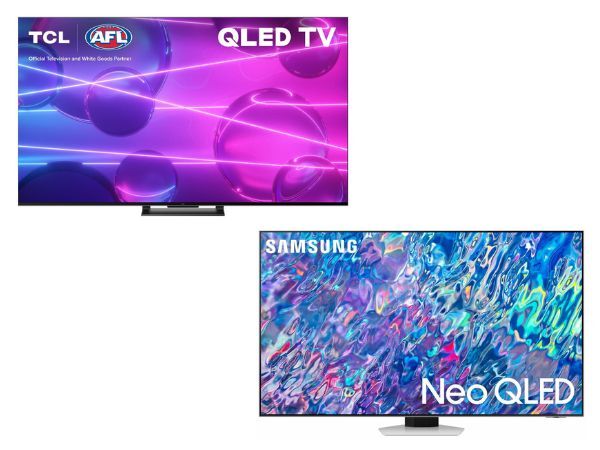
QLED and Neo QLED
As with OLED, there are also two generations of QLED TV. Whereas the evolution of OLED involved the addition of Quantum Dots, both generations of QLED harness this technology.
What is QLED in a TV?
In 2017, Samsung unveiled QLED (Quantum Dot LED) technology, a fusion of LED backlighting and quantum dots. The dots enhance the performance of LED-backlit LCD screens, improving colour accuracy and brightness.
Neo QLED
In its Neo QLED technology, Samsung evolved QLED by swapping out traditional LED backlighting for mini-LED backlights, which enhances contrast, brightness and colour range (more on this below).
Considerations for QLED and Neo QLED
While Quantum Dot QLED and Neo QLED technologies offer impressive display advancements, there are some potential downsides.
The inclusion of the advanced quantum dot and mini-LED technologies makes them more expensive to produce, and therefore to buy, than standard LED TVs.
Although Quantum Dot QLED and Neo QLED are not as susceptible to burn-in as OLED screens, it's still advisable to vary content to prevent prolonged display of static images, which can potentially lead to image retention.
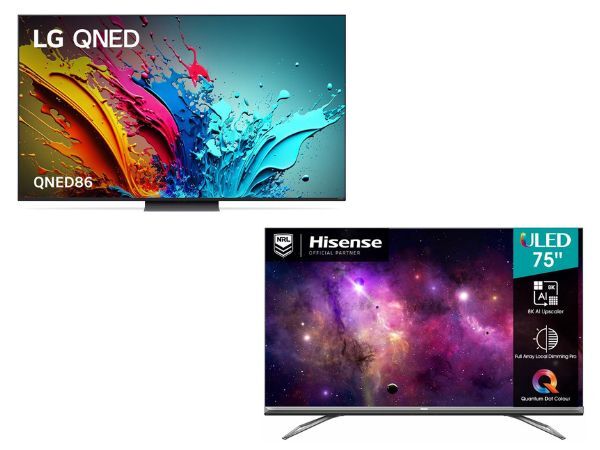
QNED and ULED
LG and Hisense have a couple of additional display technology variations.
What is QNED and how is it different?
LG's QNED (Quantum NanoCell Emitting Diode) technology combines two key elements: quantum dots and NanoCell technology. NanoCell involves the use of tiny nanoparticles in the display panel to filter and refine colours, resulting in improved purity and accuracy.
This integration complements the quantum dots' role in enhancing brightness, resulting in a vibrant and precise picture.
ULED
Coined by Hisense, the term ULED doesn't represent a single technology unique to the brand, but rather a suite of technologies that it incorporates into its high-end TVs. This combination includes Quantum Dot technology, Full Array Local Dimming (FALD), and advanced colour processing.
Considerations for QNED and ULED
Like the other advanced display technologies, QNED and ULED have higher production costs, so TVs with this tech tend to cost more than standard LCD TVs. Having said this, ULED TVs will often be more affordably priced than TVs with other advanced display technologies.
Something else that should be considered when buying a new TV is the environmental impact. While you can now buy energy efficient TVs that use less electricity, producing TVs with advanced technologies can be energy intensive. The manufacturing processes can involve the extraction and processing of complex materials including semiconductor nanoparticles, which can have environmental implications.
Whatever TV technology you decide to get, you should always ensure your old TV is thoughtfully disposed of for recycling. Appliances Online will take your old TV away for safe recycling when dropping off your new TV, with no delivery or removal fees.
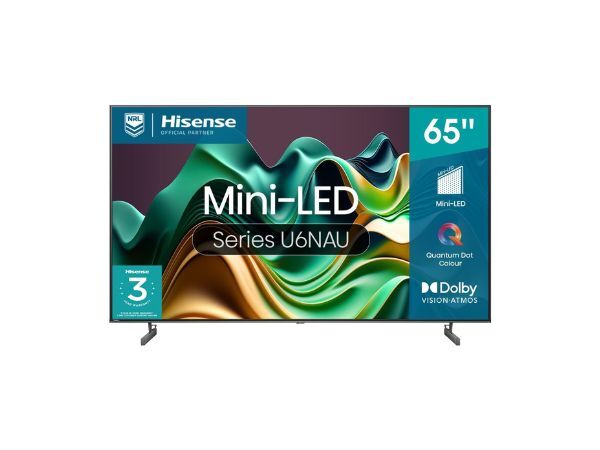
What about Mini LED?
In addition to being used in Neo-QLED TVs, you may notice some other models being marketed as Mini LED TVs. This isn’t what it might sound like - a small TV with standard LED backlighting. It’s also not really considered a display technology, because it’s not related to the screen itself, but to the LED backlighting.
Mini LED TVs use much smaller LED light sources, enabling more precise local dimming and improving overall picture quality. It’s a technology found in some high end TVs, and usually has a higher price tag than TVs with otherwise similar specs.
What is MicroLED TV?
A display technology that you won’t yet encounter when browsing for a new TV, but may do in the next few years, is microLED. Still under development, microLED combines the benefits of OLED and traditional LED/LCD displays while addressing some of their limitations.
MicroLED technology involves tiny LED modules that emit their own light, similar to OLED, but which don’t suffer from issues like burn-in, which has been an issue with some OLED TVs in the past.
While microLED has shown potential, it has faced challenges related to manufacturing complexity, cost, and scalability. The technology is still evolving, and certain manufacturers have showcased prototype microLED TVs. However, mass adoption and availability in the consumer market may take more time.
How do refresh rates affect TV display?
Regardless of the display technology being used, the refresh rates of TVs can vary. The refresh rate is the number of times per second a display refreshes its image, measured in Hertz (Hz), impacting the smoothness of motion and visual clarity on screens.
While 120Hz is a common standard for high-end TVs containing the display technologies we’ve looked at here, some models have refresh rates as high as 240Hz, making them particularly appealing to gamers and sports fans where speed is often the name of the game.
Putting on a display
It can be hard to recall how grainy TV images used to be. Continual technological progress means we quickly get used to the standard tech of the day. It’s fair to say though, that we’ve arrived at a point where even lower end TVs provide a very good quality picture compared with the best TVs of a couple of decades ago.
Whether you opt for the cinematic brilliance of OLED or QD-OLED, the cutting-edge QLED or Neo QLED, the precision of QNED, or the immersive experience of a ULED TV, each technology brings something unique to the table.
If a TV does not specify one of these specific screen technologies, it can generally be assumed to have a standard LCD display with LED backlighting - which can still deliver a very high quality viewing experience.
Consider the type of content you use your TV screen for, as well as your preferred screen size and budget, and you should be able to find the perfect TV for your home theatre or living room.
Appliances Online stocks a huge range of TVs, most of them 4K, from brands including Samsung, LG, Sony, TCL, Hisense, JVC and Chiq.
Get your new TV delivered and installed sooner with Free Next Day Delivery*
We deliver smart TVs, and the rest of our products, to 95% of Australia’s population with Appliances Online's legendary FREE delivery* - and we can usually get your new telly to you by the next day (Mon-Fri) if it’s in stock. Most stores don’t offer this, so if you’re comparing prices, always factor in the other retailer’s delivery cost and how long it will take to get to you. PLUS, if you’re getting rid of an old TV, we’ll happily take it away for recycling when we deliver your new one.
You can view a huge range of TVs here, or if you want to find out more about LCD, HDR and LED TV, or any other details to help you choose the best TV for your home, read our TV Buying Guide or call us any time of the day or night on 1300 004 500.
OLED, QLED & QNED FAQs
Frequently Asked Questions | Answers |
|---|---|
What is OLED in a TV? | OLED stands for “Organic Light Emitting Diode.” Each pixel in an OLED panel emits its own light, which allows for perfect blacks, brilliant contrast, and ultra-slim designs. |
What does QLED mean on a television? | QLED stands for “Quantum-dot Light Emitting Diode.” It’s a type of LED TV that uses quantum dots to enhance brightness and colour. It’s ideal for well-lit rooms and vibrant viewing. |
What is QNED TV technology? | QNED is a newer display type that combines Quantum Dot and NanoCell technologies with Mini LED backlighting. It’s LG’s high-end alternative to OLED and QLED, offering improved brightness and colour control. |
What’s the difference between OLED and QLED TVs? | OLED TVs use self-lit pixels for superior contrast and black levels. QLED TVs are LED TVs with a quantum dot layer that improves brightness and colour but still use a backlight. |
What’s the difference between LED and LCD TVs? | LCD (Liquid Crystal Display) is the core screen tech, while LED refers to the backlighting method. LED TVs are essentially LCDs that use LED backlights instead of older CCFLs. |
What does 4K mean in a TV? | 4K refers to a screen resolution of 3840 x 2160 pixels, which is four times higher than Full HD. It results in sharper detail, especially on larger TVs. |
Which is better: OLED or QLED? | It depends on your environment. OLED is better for cinematic experiences in dark rooms, while QLED is brighter and better for sunny living spaces. Gamers often prefer OLED for its fast response time. |

Oli is Appliances Online's editor and blogger, with almost two decades of lifestyle-related writing and editing to his name. With a mission to help you buy better and live smarter, his brand loyalty will forever belong to the appliance manufacturer that develops a self-emptying dishwasher.
Latest Articles
LAUNDRY
9 DECEMBER 2025
10 of the most popular washer-dryer combos in Australia 2025
What space-saving laundry combos are Aussies buying this year?
HOME LIVING+
9 DECEMBER 2025
The best of the best: Our most popular appliances in 2025
Popular picks for the kitchen, laundry and home.
HOME LIVING+
9 DECEMBER 2025
Buying a Beko – What customers think
A lower price point and longer warranty aren't this brand's only strong points.
LAUNDRY
9 DECEMBER 2025
10 of the most popular top load washing machines in Australia 2025
Prefer a top loader but not sure which to pick? Let us help
More Like This
HOME LIVING+
9 DECEMBER 2025
Buying a Beko – What customers think
A lower price point and longer warranty aren't this brand's only strong points.
LAUNDRY
9 DECEMBER 2025
10 of the most popular top load washing machines in Australia 2025
Prefer a top loader but not sure which to pick? Let us help
HOME LIVING+
9 DECEMBER 2025
The best of the best: Our most popular appliances in 2025
Popular picks for the kitchen, laundry and home.
![Samsung 77 Inch S85F OLED 4K Smart AI TV QA77S85FAEXXY [2025] hero image](/ak/7/7/9/8/7798bfc2333a3a2aaf51eeec95f16cd316b3c78e_S85F_Product_Image_03-widget.png)

![LG 55 Inch OLEDB5 4K UHD Smart OLED TV OLED55B5PSA [2025] hero image](/ak/9/d/e/c/9dec16181807f5afcfbe314eb01d8486556e3efe_B5_55__FRONT-widget.png)
![LG 65 Inch OLEDB5 4K UHD Smart OLED TV OLED65B5PSA [2025] hero image](/ak/b/b/c/6/bbc635abadd60b32bf41486fea20929a77827b40_B5_65__FRONT-widget.png)
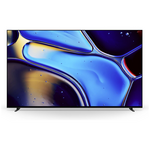
![Sony 65 Inch BRAVIA 8M2 4K HDR OLED TV K65XR80M2 [2025] hero image](/ak/d/6/4/f/d64f06e1669ee8d5c134395543426209189e8046_K65XR80M2_01-widget.png)
![LG 48 Inch OLEDB5 4K UHD Smart OLED TV OLED48B5PSA [2025] hero image](/ak/3/8/6/4/38649f0a09fa3b51608141068713f412dee3f45a_B5_48__FRONT-widget.png)
![Sony 55 Inch BRAVIA 8M2 4K HDR OLED TV K55XR80M2 [2025] hero image](/ak/6/a/2/f/6a2f7928045396aec45f5b56b66c63be0ca14242_K55XR80M2_01-widget.png)
